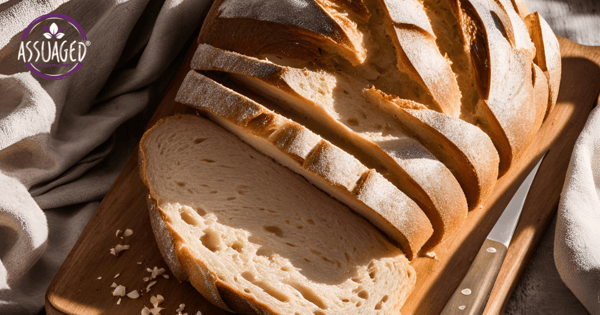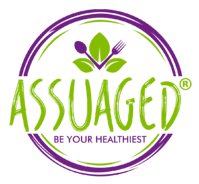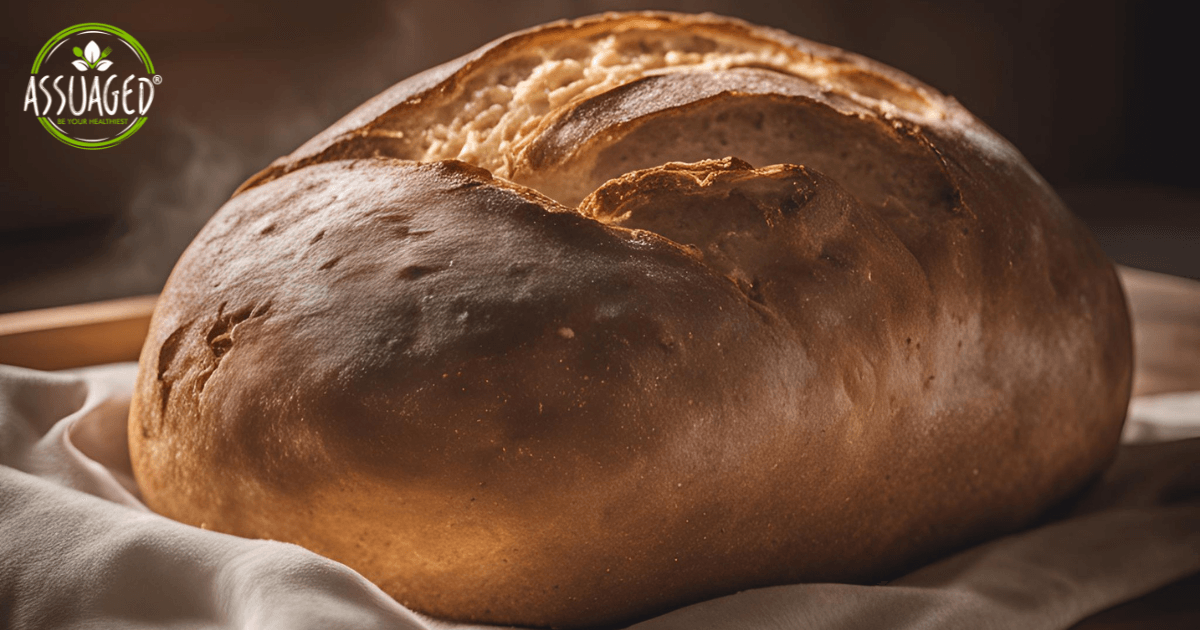As some may know, I am an avid baker and love finding new recipes to try. At first, I was discovering recipes to create delicious cookies and breads. I love sharing my baking with friends and family, and I wanted to share it with them in a way that works best for their lifestyle. Whether they were on a fitness journey or had dietary restrictions or allergies, I wanted to be able to make something for them that they would enjoy. So, my baking journey evolved into finding recipes for high-protein bagels or vegan cookies. I still bake the classics, and over the past few years, I have honed my skills at baking sourdough bread.
All the Taste, None of the Gluten!
A labor of love with its lengthy fermentation process and cultivated starter, sourdough bread has become a pantry favorite for many because of its unique tangy and slightly sour taste, which comes from the natural fermentation process. The fermentation process that creates the sour flavor also has some added benefits, such as making the bread easier to digest and potentially increasing nutrient absorption. These qualities, along with its distinct taste, are what keep sourdough so popular! With its chewy texture and crisp crust, this flavor makes sourdough a versatile and satisfying choice for everything from sandwiches to simple toast with butter. Although sourdough is already delicious and nutritious, it contains a common allergen that prevents some of us from enjoying this lovely loaf. Gluten is the component responsible for the structure of the bread. Still, many people are either sensitive to this ingredient or are completely allergic. As someone who loves to bake for people and accommodate their dietary needs, I have been searching for a gluten-free bread recipe that does not sacrifice texture because, let’s face it, many gluten-free breads lack that “bready” feel. I found a recipe for both a gluten-free sourdough starter and a gluten-free sourdough bread recipe from Lisa Bass’ blog “Farmhouse on Boone.”[3] I added a bit of my own twist to it to make it even more beginner-friendly. Let’s get into it!

Gluten Free Sourdough Recipe: Ingredients
Before getting into Lisa’s recipe, we should cover some basics. It is vital to find a gluten-free flour that you like. Here are some options to consider:
- Almond flour
- Buckwheat flour
- Sorghum flour
- Rice flour
Something to keep in mind for this recipe is that each flour behaves differently in terms of how much water it can absorb. This will affect the dough’s hydration level or how much water the dough has. The hydration level will determine how long it will take for your dough to rise. While it may take some getting used to understanding what level of hydration works best for your flour choice, the product is worth it.
Making Your Starter[2]
Now that we know what types of flour we can use, let’s start with the essential ingredient for a good sourdough bread: a sourdough starter. To make the starter, you need your gluten-free flour of choice, water, and patience. Cultivating a sourdough starter takes time to let the natural yeast grow and begin to ferment your starter; you should expect it to take several days before you start to see any air bubbles form in your starter, indicating that the yeast is alive, happy, and thriving. ast and beneficial bacteria to be able to bake with.
Since we are using gluten-free flour, your starter may take a little longer than seven days to be ready. Just be patient and continue to feed your starter as described in Day 2, and you will see your starter begin to wake up and flourish. If you are not ready to bake by day seven, that is okay. The longer your starter has to ferment, the more sour of a taste you will get in your sourdough!
Life can be pretty busy, so if you cannot stick to a regular feeding schedule or are going out of town for a couple days, you can put your starter covered in the fridge for up to a week between feedings. When you are ready to bake, just pull it out of the fridge and do your regular discard and feeding steps. It will start to bubble as the yeast begins to “wake up” and start the fermentation process. Putting your starter in the fridge between feedings can also help you stretch your flour more since you won’t feed it daily.
The Simple Gluten-Free Sourdough Bread Recipe [1]
Now it’s time to get baking! What I love about this recipe is that it does not involve the typical shaping process that a typical sourdough bread recipe includes. That process helps with gluten production; since we are gluten-free for our loaf, we don’t have to worry about it!
Tools and Tips
- Dutch oven
- If you don’t have one, you can use a pizza stone, a loaf pan, a foil roasting pan, or whatever baking sheet you may have
- To help with the steam that will typically get trapped in the Dutch oven during baking and help develop the crust, you can place a metal pan with 1-2 inches of water on the lowest rack of your oven. Once the water is steaming, add your bread to the center rack and bake for full time.
Proper storage will help you enjoy your labor of love a bit longer. Store it in a cool, dry place away from heat. You can even slice it up, put it in a freezer bag, and keep it in your freezer for when you want it. A bread box, bread bags, or paper bags are great options for storage as well.
Help support Assuaged and SAVE on great vegan organic products and more at Thrive!
If you have any other awesome gluten-free creations and alternatives of your own, then maybe you’d even like to ➡️Share Your Recipe⬅️ with the Assuaged community!


















